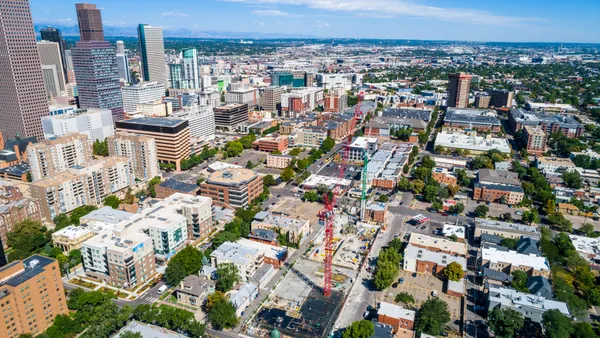Dive Brief:
- Hurricane Maria hit Puerto Rico hard this week, knocking out electricity and other essentials for much of the island. Days later, the island is still reeling as generator fuel is running out. The biggest issue facing the island is in transmission and distribution lines, not power generation, as reported by Reuters.
- Engineers and other experts from Cornell University are among those working on power storage solutions to avoid future Puerto Rico-style catastrophes. Edwin Cowen, faculty director for energy at the Atkinson Center for a Sustainable Future, says that storing power in nanogrids could be part of the solution and a step in building truly resilient communities. A nanogrid, a single building that generates and controls power to meet the needs of its occupants, could be powered by solar panels or small wind turbines. Electricity storage could be sufficient for smaller storms where the grid may only be down for about a day before power is restored.
- Though batteries are getting cheaper, they're still a bit costly, so to truly make a building "islandable," it has to produce its own power. "By integrating renewables such as solar or small-scale wind turbines with onsite storage, a building can host its own grid and distribute power from its generation capacity to critical functions in the building, and store the excess to be distributed at night or when the wind is low," Cowen said in a statement.
Dive Insight:
It's not just island territories and nations that have been battered by hurricanes this year. Millions of Florida residents were left without electricity after Hurricane Irma and Hurricane Harvey knocked out power for thousands of Texas residents and hit the entire refining capacity of the United States. While there are plenty of cleanup and recovery efforts, the scale of destruction from recent natural disasters is highlighting the need for proactive, rather than reactive, solutions.
Enter the resiliency plan. To protect resident health, safety and well-being, citizens need to plan for the future instead of just react to emergencies as they pop up. For example, cities shouldn't just be working to drain water out of flooded city blocks, they should pursue strategies to keep them from flooding in the first place.
When it comes to keeping the lights on, cities may have to move beyond energy storage. Los Angeles is moving forward with an ambitious battery storage project, but not every municipality has the same level of capital or even physical space for such initiatives. Investing in small-scale wind turbines or solar power projects can help get around that project.
If a resident can generate electricity with a solar panel, or if a hospital can keep its lights on by plugging into a rooftop solar array, cities can ensure that vital services continue after natural disasters. While generators are useful, the situation in Puerto Rico shows that they aren't infallible — there can and will be times when diesel can't be delivered. By investing in local renewable energy projects and ways for buildings to store or create energy themselves, cities could go a long way in keeping their residents safe when their electric grid is damaged from storms, earthquakes or terror attacks.











